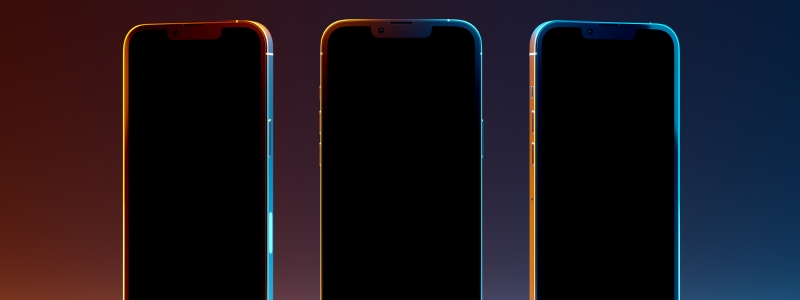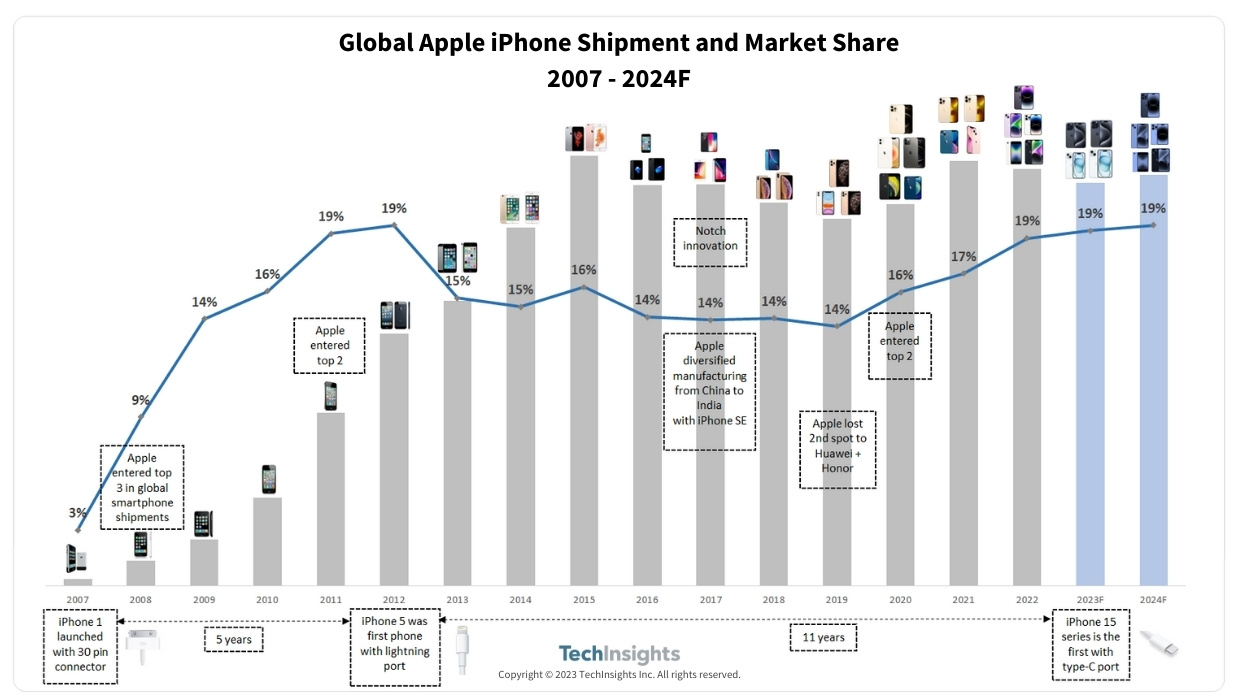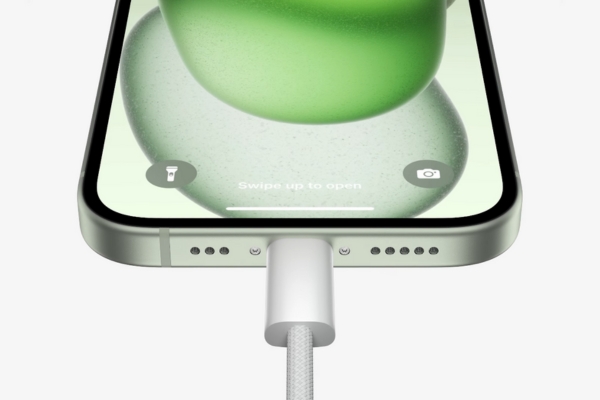Analyzing the Global Apple iPhone Shipment Volume and Market Share
Insights and Trends (2007-2024)
Share This Post
In the ever-evolving world of smartphones, Apple has remained a dominant player since the launch of its first iPhone in 2007. Over the years, the company has witnessed fluctuations in its market share and shipment volume. In this analysis, we'll delve into the data provided by WSS TechInsights, exploring key takeaways from the chart depicting Apple's iPhone shipment volume and market share from 2007 to a forecasted 2024. This journey reveals some intriguing insights into Apple's strategy and the global smartphone landscape.
Platform Login Start Your Free Trial
Apple's Expected Peak Market Share in 2024
One standout observation is Apple's expected peak market share in 2024. According to the forecast, Apple is poised to achieve its highest-ever market share, surpassing its previous peak in 2012. This projection suggests that Apple's strategy and product offerings are resonating with consumers worldwide.
The 2013 Market Share Drop
In 2013, Apple experienced a sudden drop in market share, falling from 19% to 15%. The primary reason for this decline was the rise of Chinese smartphone vendors such as Lenovo-Motorola, Xiaomi, Oppo, Huawei, and ZTE. These companies offered competitive alternatives, enticing consumers with innovative features and affordable pricing.
Apple's Consistent Top 3 Ranking
Despite never securing the top spot in terms of annual shipment volume, Apple has consistently remained in the top 3 since 2008. This achievement is particularly remarkable given that Apple releases fewer iPhone models compared to other leading OEMs. This underlines Apple's commitment to quality over quantity.
The Success of the Lightning Cable
The Lightning cable has undoubtedly been a remarkable success story for Apple. Introduced in 2012, it not only improved user experience with faster data transfer and charging but also proved to be a lucrative revenue stream for the company, as users had to purchase these cables separately. Its longevity, spanning over 11 years, stands in stark contrast to its predecessor, the 30-pin connector, which was in use for only five years. While predicting the future in the ever-evolving tech industry is challenging, it's reasonable to speculate that the USB Type-C port may have a longer-lasting presence than its predecessors, given its versatility and widespread adoption in various devices across the tech landscape.
Expanding iPhone Product Line
Apple's product line has gradually expanded over the years. Initially launching one iPhone per year, the company now offers four to five different models, including the iPhone SE. This expansion indicates Apple's ability to adapt to changing consumer preferences while maintaining its commitment to delivering high-quality devices.
Huawei's Brief Reign
In 2019, Huawei briefly surpassed Apple in market share. With a diversified product portfolio, it seemed poised to maintain a top spot. However, trade restrictions significantly impacted Huawei's growth, demonstrating the volatile nature of the smartphone market.
Apple's Expected Decline and Recovery
Apple is expected to experience a slight decline in volume in 2023 for the second consecutive year. However, the forecast suggests that the company will rebound and return to growth in 2024. This highlights Apple's resilience and adaptability in navigating market challenges.
India's Emerging Role
India has emerged as a pivotal market for Apple in recent years. Initially, it was primarily an assembly hub, but it has since grown in importance. India now assembles the latest iPhone models, showcasing its significant role in Apple's global supply chain. The country's large population, growing disposable income, and favorable trade relations with the US have made it a key market for Apple in terms of both manufacturing and sales.
Analyzing the global Apple iPhone shipment volume and market share from 2007 to 2024 offers valuable insights into Apple's journey in the smartphone industry. Despite facing challenges and competition, Apple continues to innovate, expand its product line, and adapt to changing market dynamics. As the company eyes its expected peak market share in 2024, it remains a force to be reckoned with in the ever-competitive world of smartphones. India's rise as a manufacturing and sales hub further underscores Apple's global significance and potential for growth in the years ahead.













